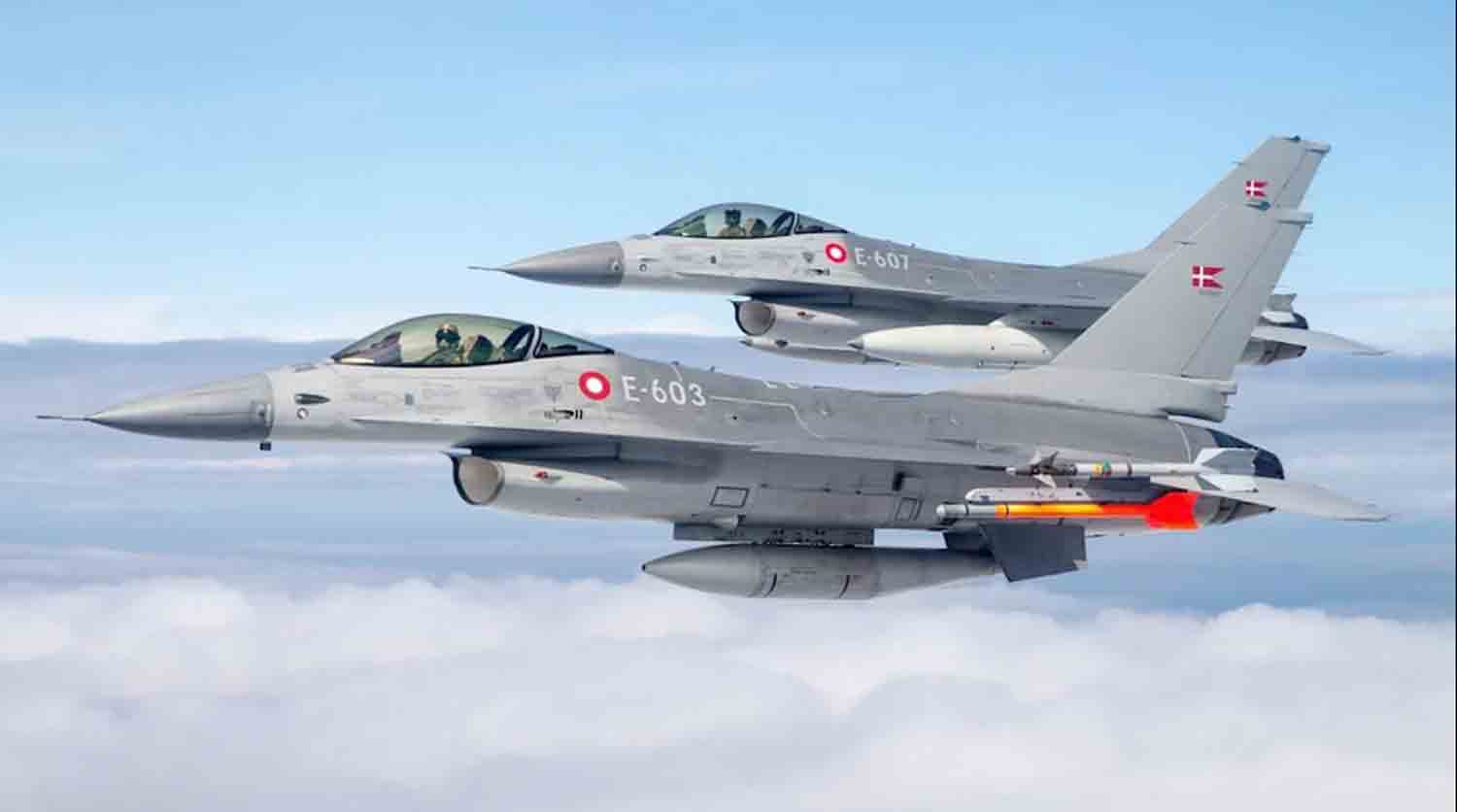On Wednesday, the Trump administration informed Congress of its plan to permit the export of defense-related goods to Ukraine via Direct Commercial Sales (DCS) exceeding $50 million, as reported by Kyiv Post citing diplomatic sources. This action, the first since President Donald Trump resumed office over 100 days ago, signifies a notable change in U.S. policy regarding the ongoing Russia-Ukraine conflict.
Occurring just weeks after the administration halted all military assistance to Ukraine for evaluation, this decision indicates a strategic shift: utilizing arms sales not only to aid a wartime ally but also to enhance U.S. influence over both Kyiv and Moscow.
Fundamentally, this situation poses a vital question: Are these weapons intended as instruments for peace through diplomacy, as emphasized by Trump, or as a means to strengthen Washington’s control over the course of one of the most significant conflicts of the 21st century? The announcement comes after a turbulent phase in U.S.-Ukraine relations.
In early March, the Trump administration suspended all military aid to Ukraine, impacting over $1 billion in arms and ammunition, including essential systems like Patriot air defense missiles and HIMARS rockets, according to The New York Times.
This pause, described by Ukrainian officials as ‘painful but not fatal,’ aimed to pressure Kyiv into engaging in peace talks with Russia, following a contentious Oval Office meeting between Trump and Ukrainian President Volodymyr Zelenskyy. The suspension caused significant concern in Ukraine and among its European allies, with some in Kyiv characterizing it as a ‘betrayal,’ as reported by Reuters.
By mid-March, the administration decided to lift the suspension after Ukraine expressed willingness for a 30-day ceasefire, facilitated by discussions in Saudi Arabia, as reported by PBS News. This swift change highlights the administration’s strategy of using military aid as both an incentive and a deterrent to influence Kyiv’s diplomatic stance.
The choice to resume arms sales through the Direct Commercial Sales (DCS) process, which permits U.S. defense contractors to engage directly with foreign governments under the oversight of the State Department, is particularly significant. Unlike the conventional Foreign Military Sales (FMS) that involve government-to-government agreements, DCS transactions are typically less visible, providing a level of confidentiality.
A security analyst from the research organization Tochniy noted in an interview with Kyiv Post’s Washington correspondent, “All DCS are quiet; they don’t get announced publicly like Foreign Military Sales.” This lack of transparency enables the U.S. to retain adaptability in its foreign policy, a characteristic of Trump’s international relations strategy.
The $50 million DCS license, filed under the Arms Export Control Act, encompasses defense articles, technical data, and services, although the specific systems were not detailed in the notification reviewed by Kyiv Post. Understanding the geopolitical context of this decision is essential for grasping its ramifications. Since Russia’s full-scale invasion of Ukraine in February 2022, the United States has emerged as Kyiv’s largest single source of military assistance, providing over $66.5 billion, according to the U.S. Department of State.
This support has included advanced systems such as the Patriot air defense system, which can intercept cruise missiles, ballistic missiles, and aircraft, as well as the High Mobility Artillery Rocket System (HIMARS), capable of striking targets up to 300 kilometers away with precision-guided munitions.
In the midst of this stalemate, Trump has consistently voiced his aspiration for a ‘lasting ceasefire,’ a goal that necessitates influence over both Kyiv and Moscow, as noted by Dr. Michael Cecire, a defense and security researcher at the Rand Corporation, in comments to the Kyiv Post. The revival of arms sales through DCS is a strategic decision aimed at enhancing U.S. leverage in this intricate situation.
By persistently supplying Ukraine with defense materials, the United States ensures that Kyiv remains reliant on American weaponry, spare parts, and technical assistance. This reliance creates a tactical edge, enabling Washington to sway Ukraine’s choices during negotiations.
‘If American military support for Ukraine persists—whether through the continuation of the existing package or further use of presidential drawdown authorities—it will amplify U.S. leverage,’ Cecire stated to the Kyiv Post. The potential to suspend aid, as illustrated in March, acts as a significant pressure point to encourage Kyiv to make concessions, such as agreeing to a ceasefire that might entail territorial compromises, a notion that remains highly contentious in Ukraine.
At the same time, the arms sales convey a message to Moscow. By ensuring a continuous supply of weapons to Ukraine, the U.S. reaffirms its dedication to countering Russian aggression, which could compel the Kremlin to pursue diplomatic avenues.
The administration’s focus on a ceasefire, along with its readiness to resume aid, indicates a dual approach: bolstering Ukraine’s defense while facilitating negotiation channels with Russia. This strategy mirrors historical U.S. efforts to mediate conflicts, such as the Camp David Accords in 1978, where military assistance to Israel and Egypt was leveraged to achieve a peace agreement. Nevertheless, the Russia-Ukraine conflict poses distinct challenges, given Moscow’s territorial ambitions and Kyiv’s fundamental struggle for sovereignty.
Utilizing DCS as a delivery method introduces an additional layer of complexity. Since 2015, the U.S. has approved over $1.6 billion in defense exports to Ukraine via DCS, highlighting the program’s importance, as reported by Kyiv Post. These transactions have encompassed a variety of equipment, ranging from small arms like .50 caliber machine guns to technical services that bolster Ukraine’s military infrastructure.
The .50 caliber machine gun, including models like the Browning M2, is a versatile weapon adept at targeting light vehicles, personnel, and low-flying aircraft. When mounted on vehicles or tripods, it provides sustained firepower with an effective range of up to 2,000 meters, making it a crucial component of Ukraine’s defense against Russian infantry and drones.
Although not as advanced as systems like HIMARS or Patriot, these weapons are vital for Ukraine’s ground forces, which are under constant attack from Russian forces in eastern areas such as Donetsk. In comparison to Russian counterparts like the Kord 12.7mm heavy machine gun, the Browning M2 is noted for its superior reliability and compatibility with NATO allies, enhancing its global interoperability.
The Kord, while effective, is bulkier and less suited for mobile operations, which restricts its effectiveness in Ukraine’s rapidly changing combat environment. The U.S. decision to incorporate such systems into DCS packages helps ensure that Ukraine retains a qualitative advantage in specific tactical situations, even as Russia fields larger numbers of less advanced equipment. The broader ramifications of this policy reach beyond the battlefield, as the Trump administration seeks to balance military assistance with diplomatic goals, navigating the tensions between domestic isolationist factions advocating for reduced foreign involvement and interventionists who view support for Ukraine as essential in countering Russian expansion.
The earlier suspension of aid by Trump, which provoked strong reactions from both Democrats and some Republicans, underscored the existing tension, as highlighted by The New York Times. The reinitiation of sales through DCS, a less prominent channel, may serve as a strategy to appease both factions while maintaining strategic flexibility.
For Ukraine, the ongoing supply of U.S. weaponry presents a complex situation. It enhances Kyiv’s capacity to counter Russian advances but simultaneously increases its dependence on American assistance, which could restrict its independence in future negotiations.
Zelenskyy’s declaration in April regarding Ukraine’s plans to acquire $30-50 billion worth of air defense systems and weaponry from the U.S., as reported by Kyiv Post, emphasizes this reliance. Systems like the Patriot, which costs around $1 billion per battery, necessitate continuous U.S. maintenance and munitions, binding Ukraine to American supply chains for many years.
This situation is reminiscent of historical instances, such as U.S. support for South Vietnam in the 1960s, where military aid fostered a client state heavily swayed by Washington’s interests. The administration’s emphasis on achieving a ceasefire also prompts inquiries about the conditions of any prospective agreement.
Trump’s special envoy, Keith Kellogg, recently asserted that Kyiv had accepted 22 specific conditions for concluding the war during discussions in London, according to a report by Kyiv Post. Although the specifics of these conditions remain undisclosed, they likely entail concessions that could challenge Ukraine’s domestic backing.
In Moscow, Kremlin spokesperson Dmitry Peskov characterized the halt of U.S. aid as a move towards peace, indicating that Russia perceives Trump’s pressure on Kyiv as a chance to obtain favorable terms, as reported by Politico.
This evolving situation establishes the U.S. as a mediator with unmatched influence, capable of directing the conflict’s resolution through carefully managed arms supplies. The choice to emphasize Direct Commercial Sales (DCS) further underscores the program’s strategic benefits.
In contrast to Foreign Military Sales (FMS), which often require protracted congressional approval, DCS transactions can be carried out more rapidly, enabling the U.S. to address Ukraine’s urgent requirements while keeping a low profile. The Arms Export Control Act, which regulates these transactions, provides the president with extensive authority over defense exports, a power that Trump has utilized to further his foreign policy objectives.
This adaptability was apparent in the swift resumption of aid in March, following Ukraine’s agreement to engage in ceasefire discussions, as noted by NPR. The long-term implications of this policy are significant. For Ukraine, reliance on U.S. military support may limit its capacity to forge independent alliances, such as deeper ties with the European Union or NATO.
While European partners are increasing their military assistance, they do not possess the capability to fully substitute U.S. contributions, especially for advanced systems like Patriot and HIMARS, according to Al Jazeera. This disparity highlights the persistent importance of American influence in the conflict. For the U.S., this strategy entails risks, including the possibility of escalation if Russia views ongoing arms sales as a provocation.
The intricate balance between supporting Ukraine and engaging with Moscow will challenge Trump’s diplomatic skills in the coming months. From a wider perspective, the Trump administration’s strategy embodies a pragmatic, albeit contentious, vision of American leadership. By leveraging arms sales, the U.S. is not only assisting an ally but also positioning itself as a key player in a conflict with far-reaching global consequences.
The focus on diplomacy, coupled with the potential suspension of military aid, indicates a shift away from the indefinite commitments seen in prior administrations. However, the use of discreet strategies such as DCS demonstrates a deliberate attempt to exert influence while avoiding the political repercussions associated with prominent interventions.
Although this approach may yield short-term success, it prompts concerns regarding its long-term viability. Is it possible for Trump to negotiate a durable peace without distancing Ukraine or empowering Russia? The outcome may depend on his skillful management of the leverage afforded by these arms sales.
Discover more from Defence Talks | Defense News Hub, Military Updates, Security Insights
Subscribe to get the latest posts sent to your email.





